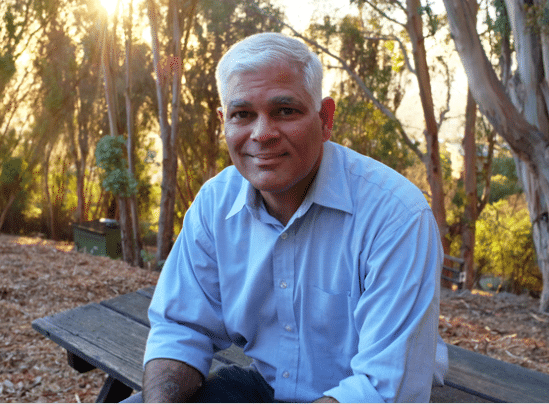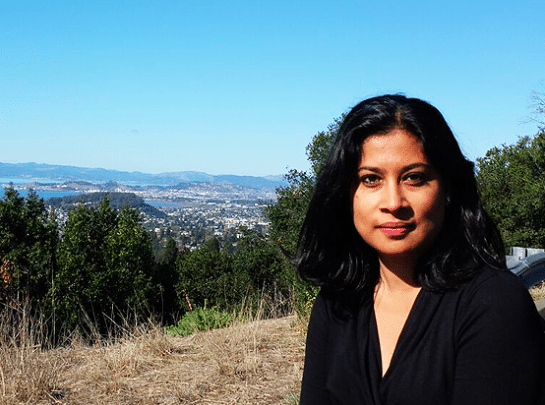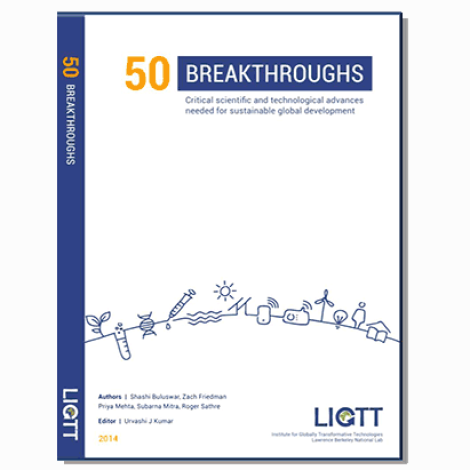
Shashi Buluswar, co-founder of the Institute for Transformative Technologies in Berkeley, California. Photo courtesy of ITT
Two years ago, a small team from the Lawrence Berkeley National Lab in Berkeley, Calif. released an enormous volume of research highlighting 50 potentially game changing interventions for the field of global development. The CEO of the lab’s spin-off organization, the Institute for Transformative Technologies (ITT), Shashi Buluswar told a group at last year’s Social Capital Markets conference that the two-year intensive research project began with a simple question: what should be the Institute’s focus?
Buluswar and a colleague at ITT, Subarna Mitra, tell E4C that through the research process, they found that most of the “innovation ecosystem” was focused on a number of small issues; that many big pressing questions were not being addressed. The research, they say, has given the previously little-known lab an entry ticket to work on those issues. We asked them five questions.
E4C: Several years and 650 pages after you started the 50 Breakthroughs research, what tangible action has come from all of that work?
SB: We are working on a number of projects, but one of ITT’s biggest initiatives driven by the 50 Breakthroughs research is rural delivery of healthcare. Most healthcare work is focused on specific diseases, but our belief is that to improve global healthcare, there has to be a systematic approach.
Outside of ITT, we see that 50 Breakthroughs is starting to become influential. A number of organizations including USAID, the Rockefeller Foundation, DFID, the Lemelson Foundation are using the research as a basis for measuring their own initiatives.
We are building an online portal for inventors to post ideas and for funders to get an early look at what solutions are out there.
We are also building an online portal for inventors to post ideas and for funders to get an early look at what solutions are out there. It is a place for people in the ecosystem to have a conversation—gradually, it will shift into the public domain, rather than being something we control.

Subarna Mitra, Vice President of the Institute for Transformative Technologies. Photo courtesy of ITT
E4C: A lot of funding goes into improving global healthcare, whether for vaccines, treatments or low-cost devices. Is the suggestion that these technologies aren’t having an impact?
SM: The linear approach to problem-solving health issues—identifying a problem, building a solution, implementing it wherever there is need—falls short in places where healthcare is virtually non-existent, as it is for most of the world’s rural population. What is needed are comprehensive interventions.
Take preeclampsia—a maternal health condition—as an example. Preeclampsia has very serious consequences if not treated. Identifying and treating the condition is certainly medically possible and technically feasible. But for a pregnant woman in a rural area, she could travel half a day to reach a clinic that does not have the facilities to perform even basic tests, like checking blood sugar levels and blood pressure. Most likely, she wouldn’t know that she wasn’t being provided the right services. Even the clinician might not know. [This failure is not a matter of technology]; it’s a matter of structural gaps—not enough doctors, medical expertise and infrastructure for clinical data.
Telemedicine today is basically glorified Skype. But suppose you integrated biometric IDs, diagnostics, medical records and telemedicine. Now a patient’s history would be available for any physician.
To overcome these gaps, you need to have technology alongside new delivery models. You have to identify an entire set of conditions needed to keep people in good health and what it takes to do that in a financially sustainable and scalable way. If you can [crack that], you can help doctors and NGOs do more with less while also making it attractive for for-profit organizations to serve rural markets.
SB: On the point of one-off technologies, the problem is that nothing is being done to link the various existing tools together. For example—diagnostics and telemedicine: telemedicine today is basically glorified Skype. Now, suppose you integrated biometric IDs, diagnostics, medical records and telemedicine—immediately, a patient’s medical records and history would be available for any physician.
All the pieces are already there to fundamentally change the game. We don’t need to reinvent anything; we need to crack the model.
E4C: So what healthcare model(s) is ITT promoting that could potentially do that?
SM: Through the 50 Breakthroughs research, we focused on maternal, neonatal and primary healthcare—the cornerstones of a good health system. We did a systematic analysis to find structural gaps and to understand what is needed to solve them.
From that, we we came up with an intervention we call the “universal clinic,” which is comprised of four modules for launching fully fledged clinics in rural areas. It includes: digital tools to support rural clinicians and connect them to urban doctors; diagnostic and treatment equipment, with emphasis on primary, maternal, neonatal and child care; standalone utilities; and a low-cost, durable structure to house the clinic. For existing clinics, you can add on to what they need and where there are no clinics, you can quickly build them from scratch.
The strategy is to build a hub-and-spoke network of rural clinics tied to more advanced urban hospitals.
The universal clinic isn’t reinventing anything. It is pulling together and building onto pieces that are already there to bring meaningful healthcare to rural people. The strategy is to build a hub-and-spoke network of rural clinics tied to more advanced urban hospitals.
We are currently supporting Nairobi Women’s Hospital—East Africa’s largest hospital chain—to build a presence in rural areas through this approach. The incentive for them is that going into rural areas is really their only path for growth. It’s a perfect marriage; it’s creating a market. We’re looking at doing something similar in India.
E4C: There are no shortage of social start-ups tackling many of the ideas addressed in the report, and often they are touted as having tremendous promise for sustainable development. What is your view: are start-ups the optimal way to test new, potentially scalable solutions?
SB: Name one start-up that is not a software company that has reached scale quickly. It is a nice narrative to have social entrepreneurs doing all this work, but in this respect, [the innovation ecosystem] is caught in an echo chamber.
Also, let’s flip the question around: what if three 25-year olds from Kenya came to the U.S. and said they wanted to solve all our problems. How would we react to that?
Let’s flip the question around: what if three 25-year olds from Kenya came to the U.S. and said they wanted to solve all our problems. How would we react to that?
SM: On the other side of that, the people with the deep pockets who can afford to do R&D on new technologies focus on strategies that are aligned to their bottom lines—the ones that can become profitable in the near-term. The rural poor get left out of that equation. Game changing innovation is not something they often have access to. When they do, it is often government agencies and donors who are trying to introduce these innovations to them, but the goals for this work change too frequently—every year or couple of years. The market needs to have a longer-term focus.
E4C: Reading through the 50 Breakthroughs report, the body of work feels both illuminating and daunting. How has it affected your personal sense of purpose and commitment to your work?
SM: I’ve had a checkered career—I started in software and then went into business strategy, then international development strategy. My work now brings all of those experiences together and helps me connect the dots in interesting ways. Every day, I get to use my past training in a novel way and look problems and solutions from multiple angles. That, for me, is tremendous.
I also meet amazing people in this field who have their hearts in the right place and are committing their lives and energy to social good. This work has especially helped me appreciate the practical challenges of people on the ground who are getting things done. That’s where I draw my energy and inspiration.
SB: Last year, we wet through a rough patch in terms of funding. We really had to scale down the team. Part of me was tempted to just go work for another organization. That would have been a comfortable decision, but through this project, I feel a personal sense of responsibility to make these breakthroughs happen. People look to us to do that.


Thanks for sharing your thoughts about google.co.uk.
Regards